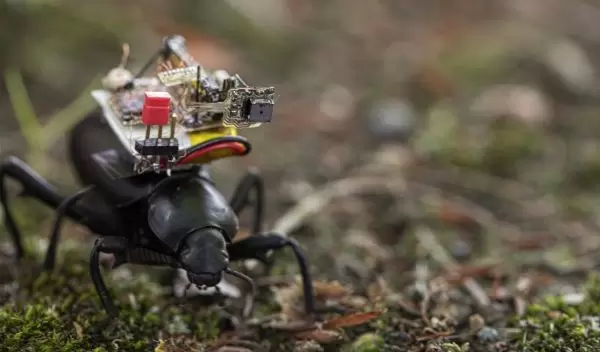
GoPro for beetles: Researchers create a robotic camera backpack for insects
In the movie Ant-Man, the title character can shrink in size and travel by soaring on the back of an insect. Now researchers at the University of Washington have developed a tiny wireless, steerable camera that can also ride aboard an insect, giving everyone a chance to see an Ant-Man view of the world.
The camera streams video to a smartphone at 1-to-5 frames per second and sits on a mechanical arm that can pivot 60 degrees, allowing a viewer to capture a high-resolution, panoramic shot or track a moving object while expending a minimal amount of energy. To demonstrate the versatility of this system, which weighs about 250 milligrams -- about one-tenth the weight of a playing card -- the team mounted it on top of live beetles and insect-sized robots.
The results of the U.S. National Science Foundation-funded study are published in Science Robotics.
"We have created a low-power, low-weight, wireless camera system that can capture a first-person view of what's happening from a live insect or create vision for small robots," said senior author Shyam Gollakota of the university's Paul G. Allen School of Computer Science & Engineering. "Vision is so important for communication and for navigation, but it's extremely challenging to do it at such a small scale. As a result, prior to our work, wireless vision had not been possible for small robots."
Typical small cameras, such as those used in smartphones, use a lot of power to capture wide-angle, high-resolution photos. While the cameras themselves are lightweight, the batteries needed to support them make the overall system too big and heavy for insects, or insect-sized robots, to lug around. So the team took a lesson from biology.
To mimic an animal's vision, the researchers used a tiny, ultra-low-power black-and-white camera that can sweep across a field of view with the help of a mechanical arm. The arm moves when the team applies high voltage, making the material bend and moving the camera to the desired position.
